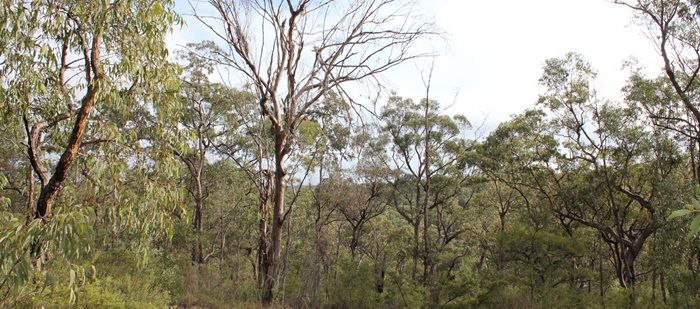Common diseases
Get all the details on plant diseases such as Phytophthora, Armillaria, Fusarium Wilt of palms, Ganoderma Butt Rot and Cypress Canker, along with methods for disease diagnosis and control.
Phytophthora Dieback
Phytophthora (pronounced fy-TOFF-thora) is a devastating plant killer causing Phytophthora Dieback disease and infection is permanent.
Phytophthora is a soil borne water mould which spreads naturally in water or roots. It is spread much faster and further by humans moving even small amounts of contaminated soil or plant material.
It was once thought to be native to New South Wales or introduced such a long time ago that indigenous plants had developed resistance to it but this is now known not to be the case. It is true that Phytophthora Dieback presents itself differently in different vegetation types than it does in other states of Australia, but it is no less of a threat to the natural ecosystems of New South Wales.


Armillaria Root Rot
Armillaria luteobubalina is a soilborne fungus that causes root rot and wood decay of a wide variety of plants, including many Australian native and introduced ornamental plants.
The fungus Armillaria luteobubalina is native to Australia and causes losses in natural ecosystems, forest plantations, fruit crops and ornamental or amenity plants. The host range of the fungus is very large and poorly defined with little information on the presence of resistant or tolerant species.
Azaleas & Rhododendrons
Diseases
Powdery mildew
Caused by the fungus Microsphaera penicillata, this disease causes azalea and rhododendron leaves to discolour and become coated with a white powdery fungal growth. Control of the disease is difficult, especially in certain weather conditions that favour the disease, i.e. when it is warm and humid. Plants that are young or are growing in the shade are often most susceptible.


Cypress Canker
Cypress Canker is a serious disease of exotic conifers in Australia.
The Monterey Cypress (Cupressus macrocarpa) and Leyland Cypress (x Cupressocyparis leylandii) are particularly susceptible to Cypress Canker, although more than 25 other conifers are affected, including Castlewellan Gold, Leyton's Green, Naylor's Blue, Swane's Golden, Pencil Pines and the Arizona and Lawson Cypresses.
Cypress Canker is caused by several species of fungi (Seiridium cardinale, S. unicome and S. cupressi) whose spores enter the plants through natural fissures in the bark or through injuries caused by gardening equipment or falling branches. The fungus interferes with the sap-conducting system, eventually causing death of the branch or main trunk above the wound. Older trees are usually more susceptible but any tree is susceptible if stressed, for example, by drought or poor nutrition.
Fusarium Wilt of Palms
Fusarium Wilt is a devastating disease of certain species of palms that was first observed in Australia in the early 1980s when palms began to die at Centennial Park in Sydney.
Most of these palms have since died, and Fusarium Wilt has been observed at other locations in Sydney. It is likely that more palms will die and that the disease will limit the use of certain palm species used for landscaping.
Symptoms
Palms affected by this disease are characterised by an unusual type of frond death - fronds may die more rapidly on one side of the tree, or from the base or from the centre of the tree. Most characteristically the pinnae and spines on one side of an individual frond die first and the lower fronds die rapidly so that eventually only a few surviving fronds form a spike at the top of the tree.


Ganoderma
Ganoderma Butt Rot is caused by Ganoderma applanatum (formerly Fomes applanatus).
The fungus Ganoderma applanatum is an important decomposer of logs and stumps but it also colonises wounds, and can cause decay of sapwood and heartwood in roots, butts and trunks of trees. It affects native tree species such as acacias, eucalypts, figs and beech, as well as many introduced species such as oaks, elms, ash and some conifers.
Symptoms
Ganoderma applanatum produces very distinctive, shelf-like fruiting structures or brackets. They are most commonly found on stumps or near the base of living trees, often at the site of an old wound.
The brackets of Ganoderma applanatum are some of the largest produced by any fungus. They are hard and woody and grow perennially for 5 to 10 years, reaching as much as 50 cm or more across and 10 cm thick.